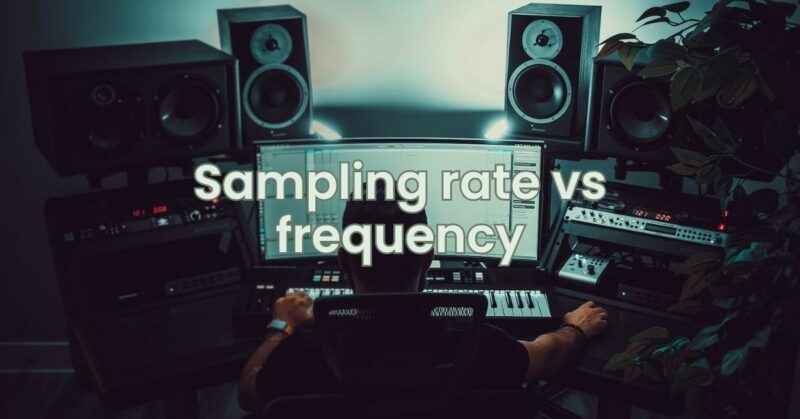Sampling rate and frequency are two important terms in digital audio. They are often used interchangeably, but they actually measure different things.
Sampling rate measures the number of times per second that an audio signal is sampled. A higher sampling rate means that more samples are taken per second, which results in a more accurate representation of the original audio signal.
Frequency measures the number of times per second that a sound wave vibrates. A higher frequency means that the sound wave is vibrating more quickly, which results in a higher-pitched sound.
The relationship between sampling rate and frequency is that the sampling rate must be at least twice the highest frequency of the audio signal in order to avoid aliasing. Aliasing is a type of distortion that can occur when a digital audio signal is sampled at a frequency that is too low.
For example, if the highest frequency of the audio signal is 20 kHz, then the sampling rate must be at least 40 kHz. This is because the Nyquist Theorem states that the sampling rate must be at least twice the highest frequency in order to accurately represent the signal.
In general, a higher sampling rate will result in a higher-quality audio file. This is because a higher sampling rate allows for a more accurate representation of the original audio signal. However, there is a point of diminishing returns. Once you reach a certain sampling rate, the difference in audio quality is not as noticeable.
The best sampling rate for you will depend on your individual needs and preferences. If you are an audiophile who wants the best possible sound quality, then you will want to use a high sampling rate. However, if you are just looking for a good-quality audio file that is not too large, then you can use a lower sampling rate.
Here is a table that summarizes the differences between sampling rate and frequency:
| Feature | Sampling Rate | Frequency |
|---|---|---|
| What it measures | Number of times per second that an audio signal is sampled | Number of times per second that a sound wave vibrates |
| How it affects audio quality | More important for accuracy | Less important for accuracy, more important for pitch |
| File size | Larger for higher sampling rate | Smaller for lower frequency |
Here are some recommendations for sampling rate:
- CD-quality: 44.1 kHz
- High-resolution audio: 96 kHz or higher
- Streaming: 44.1 kHz or 48 kHz
Ultimately, the best way to decide which sampling rate is right for you is to listen to different files and see what you prefer.


